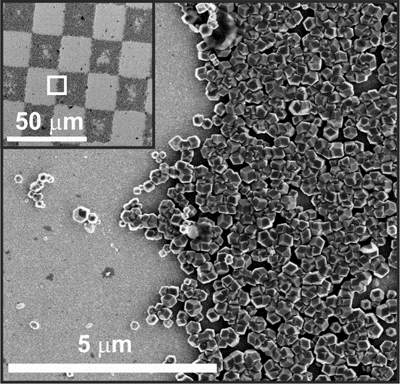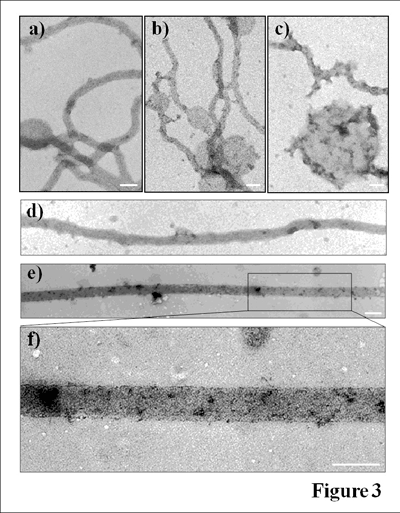Group creates magnetic bacteria, could lead to biocomputers
Team develops technology that could be used to create biological wires, hard drives, and computers
A team of researchers out of the University of Leeds has successfully used an iron-consuming bacterium to create a surface of magnets similar to those used in hard drives and wiring.

Researchers have successfully cultivated biomagnets.
This is a fairly significant breakthrough because nanoscale technology is fast approaching its limits in terms of small-scale design. Modern-day manufacturing processes are no longer efficient in this regard, so in order to continue getting smaller, while still improving the speed and efficiency of the technology, researchers have turned to nature.
Dr. Sarah Staniland, from the University’s School of Physics and Astronomy, the researcher who led this study, explains: “We are quickly reaching the limits of traditional electronic manufacturing as computer components get smaller. The machines we’ve traditionally used to build them are clumsy at such small scales. Nature has provided us with the perfect tool to circumvent this problem.”
The team’s research was aided by their longstanding collaborators out of the Tokyo University of Agriculture and Technology.
Bottoms up!
In layman’s terms, the way in which this process works is that as a bacterium eats iron, tiny magnets are formed within itself. Understanding how, exactly, the proteins inside the bacterium collect, shape, and position these nanomagnets, and how to replicate this behavior outside the bacteria, is what drove the team’s research.
The result of their study was a magnetic array created by Ph.D. student Johanna Galloway. She used a protein that creates perfect nanocrystals of magnetite, the most magnetic mineral on Earth, inside the bacterium magnetospirilllum magneticum .
The process she used is somewhat akin to potato-printing (just at a smaller scale): The protein is attached to a gold-plated surface in checkerboard pattern. It is then placed in a solution-containing iron where, at 176°F (80°C), similarly sized crystals of magnetite form on the protein-covered sections of the surface.
The team hopes to reduce the size of the magnets so that they can create arrays of single nanomagnets.
They also hope to be able to vary the magnetic materials that the protein can control. Success in this regard would allow each nanomagnet to hold one bit of information, thereby allowing the construction of better, more efficient hard drives.
“Using today’s ‘top-down’ method — essentially sculpting tiny magnets out of a big magnet — it is increasingly difficult to produce the small magnets of the same size and shape which are needed to store data,” explains Ms. Galloway. “Using the method developed here at Leeds, the proteins do all the hard work; they gather the iron, create the most magnetic compound, and arrange it into regularly-sized cubes.”
The team believes that their bottoms-up approach will lead to cheaper, more environmentally-friendly electronics.
But wait — you can do more
In another study, this one led by Dr. Masayoshi Tanaka from the Tokyo University of Agriculture and Technology, the team discovered that a different protein could be used to create tiny electrical wires.
Here’s how this one works: the magnetic bacterium contains a protein that has the unique ability of being able to mold mini compartments for the formation of nanomagnets. The protein forms the compartments using the cell membrane’s lipids (fats).
Using the membrane is key here, as it acts as a film-like wall that separates the cell’s interior from the outside environment.
Dr. Tanaka was able to turn this into a nanowire using quantum dots: particles of copper indium sulphide and zinc sulphide which glow and conduct electricity. He simply used the aforementioned protein to make tubes of fat containing quantum dots in them.

Microscopic view of the team’s biologically-based nanowires.
“It is possible to tune these biological wires to have a particular electrical resistance,” Dr. Tanaka explains. “In the future, they could be grown connected to other components as part of an entirely biological computer.”
Outlook
Moving forward, the two-school team plans to further examine the biological processes behind the two proteins’ behaviors.
“Our aim is to develop a toolkit of proteins and chemicals which could be used to grow computer components from scratch,” concludes Dr Staniland.
Download the team’s papers below. ■
Story via: The University of Leeds
Advertisement
Learn more about Electronic Products Magazine





